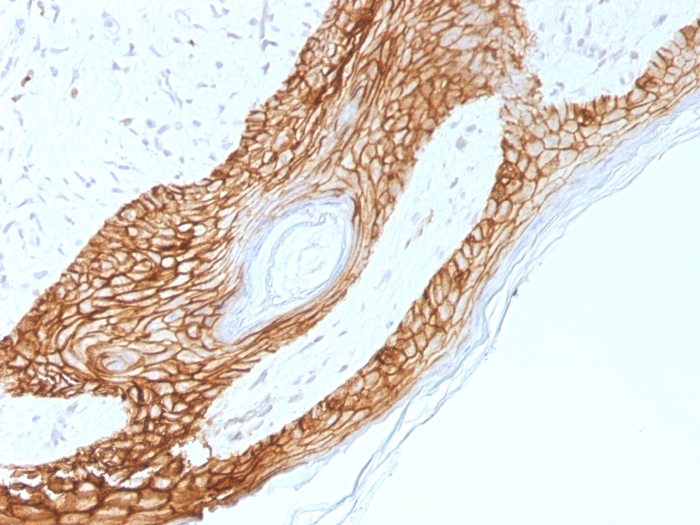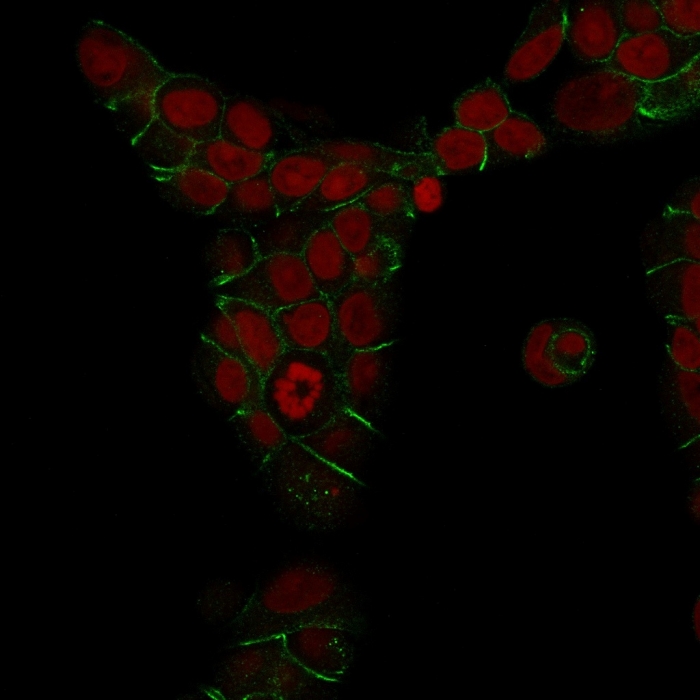Learn about our comprehensive antibody validation methods to ensure monospecificity. Antibody Validation>>

Formalin-fixed, paraffin-embedded human skin stained with E-Cadherin Mouse Monoclonal Antibody (4A2).

Immunofluorescence analysis of MeOH-fixed MCF-7 cells. E-Cadherin Mouse Monoclonal Antibody (4A2) followed by goat anti-mouse IgG-CF488 (green). Nuclei counterstained with RedDot.

Flow cytometric analysis of trypsinized MCF-7 cells. E-Cadherin Mouse Monoclonal Antibody (4A2) followed by goat anti-mouse IgG-CF488 (blue); isotype control (red).
Recognizes a protein of 120-80kDa, identified as E-cadherin. Cadherins comprise a family of Ca2+-dependent adhesion molecules that function to mediate cell-cell binding critical to the maintenance of tissue structure and morphogenesis. The classical cadherins, E-, N- and P-cadherin, consist of large extracellular domains characterized by a series of five homologous NH2 terminal repeats. The relatively short intracellular domains interact with a variety of cytoplasmic proteins, such as 尾-catenin, to regulate cadherin function. E-cadherin plays an important role in epithelial cell adhesion. A decreased expression of E-cadherin is associated with metastatic potential and poor prognosis in breast cancer, prostate and esophageal cancer. In combination with p120 Catenin, it is useful for the differentiation between ductal (E-cadherin +) and lobular (E-cadherin -) breast carcinomas. It may also help in diagnosis of mesothelioma.
There are no reviews yet.